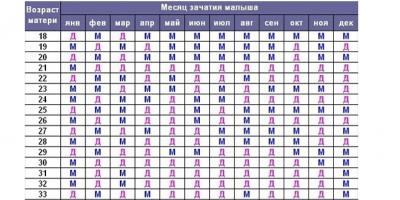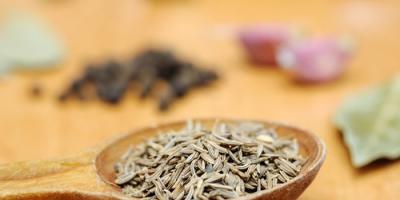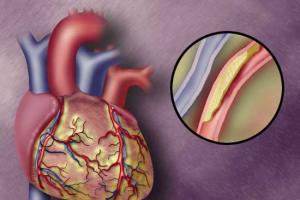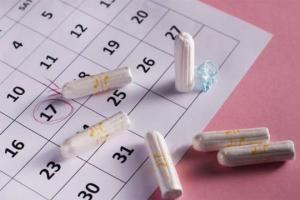After childbirth, the woman's menstrual cycle is gradually restored. This process depends on factors such as the duration of breastfeeding, physiology, age, and the presence of complications. Menstruation during breastfeeding appears when the level of prolactin in the blood decreases, which affects the production of milk, and the level of sex hormones responsible for the maturation of eggs rises. If the duration, intensity and timing of the onset of menstruation correspond to the norm, then the woman is healthy, she can again conceive and give birth to a child.
Within 6-8 weeks, the wound that forms on the inner surface of the uterus after detachment of the placenta, as well as damage in the area of the birth canal, heals. At this time, the appearance of sanious secretions associated with the rupture of small vessels is possible. Uterine contractions contribute to the removal of the remnants of the membranes, placenta, blood clots that form the so-called lochia, the primary discharge after childbirth.
As the uterus cleanses, they become more and more scarce, colorless, uniform in structure. Such discharges are normal. You should consult a doctor only if an unpleasant odor appears, they become plentiful, acquire a yellow-green color. The reason for this may be the inflammatory process caused by infection.
If bends appear on the uterus, then stagnation of secretions often occurs. At the same time, their smell and color may also change. In such cases, the uterus is washed with disinfectant solutions and its contractions are stimulated.
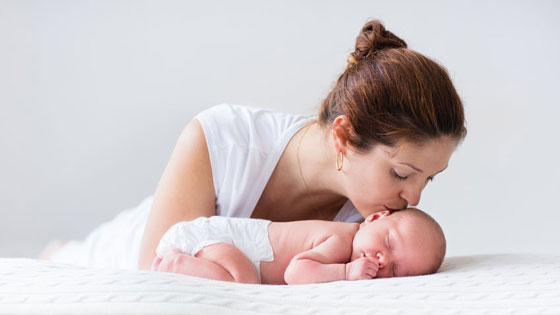
After complete cleansing before the onset of menstruation, the ovaries do not produce new eggs, since prolactin predominates in the hormone ratio. An increased level of prolactin contributes to the formation of milk and the appearance of changes in the mammary glands: an increase in their volume, the size of the nipples, and the expansion of the network of blood vessels. At the same time, prolactin suppresses the level of estrogen and progesterone, which makes it impossible for the maturation of eggs and the appearance of menstruation.
The mucous membrane is restored, the cervical canal is gradually closed. During childbirth, it expands to such a size (4 fingers) that the baby's head can pass through it. The cervix closes completely in 18-20 days. At the same time, the shape of the opening of the cervix that goes into the vagina changes: round before childbirth, it becomes slit-like.
How does breastfeeding affect menstruation?
It is impossible to establish exactly when a woman will begin her period after childbirth while breastfeeding, since this is mainly determined by the individual characteristics of her body.
Recommendation: In order to slow down the process of the appearance of the first menstruation and avoid the onset of a new pregnancy, it is necessary to set a break between daytime feedings of no more than 4 hours, and at night - no more than 5 hours. This will ensure that a sufficiently high level of prolactin is maintained.
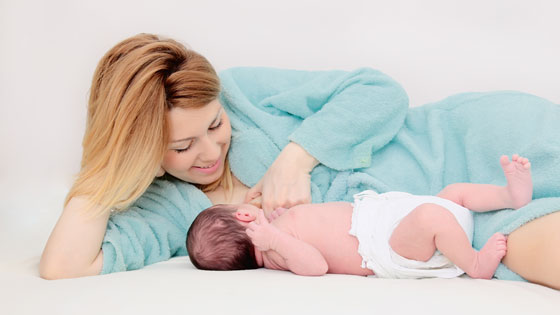
Breastfeeding affects the resumption of the menstrual cycle in the following ways:
- If a child is breastfed up to 6 months, and then, in addition to breast milk, they begin to give complementary foods (while it is less often applied to the breast), then the mother's menstruation appears 6-7 months after birth as milk production decreases.
- If a woman breastfeeds her child exclusively for up to 1 year or more, then menstruation resumes after the end of feeding.
- With mixed feeding, when a child has to be supplemented with milk mixtures immediately after birth, monthly women usually recover after 3-4 months.
- With a forced or deliberate refusal to breastfeed immediately after childbirth, menstruation appears after 5-12 weeks, as soon as the hormonal background and the functioning of the ovaries are restored.
The peculiarity of the first menstruation is that ovulation in the cycle is most often absent. There are processes characteristic of the first phase of the menstrual cycle: the maturation of the egg in the follicle, the growth of the endometrium in the uterus and its preparation for the adoption of a fertilized egg. However, the release of the egg from the follicle does not occur, it dies, the endometrium exfoliates and leaves the uterus - menstruation occurs.
Addition: During the period of recovery of menstruation after childbirth, sometimes ovulation is still possible, the onset of pregnancy is not completely excluded. Even if breastfeeding does not end, and menstruation has appeared, the woman should be protected using the means recommended by the doctor.
The menstrual cycle can be established immediately. Sometimes, on the contrary, the onset of the next menstruation is delayed or occurs faster than usual. Such violations are observed within 2-5 months.
In some cases, childbirth has a positive effect on the nature of the woman's menstrual cycle. If earlier menstruation came irregularly, then after childbirth the cycle improves, the pain associated with stagnation of blood due to the presence of uterine bends disappears, if its shape changes after childbirth.
Video: What determines the onset of menstruation after childbirth
Possible Complications
Sometimes hormonal changes that occur in a woman's body during pregnancy, childbirth and lactation lead to the fact that menstruation after stopping breastfeeding does not occur or is scarce. This is possible in the presence of some complications.
Hyperprolactinemia. Elevated prolactin levels persist after the end of breastfeeding. The cause is a malfunction of the pituitary gland due to the appearance of a benign tumor (prolactinoma). The tumor appears due to a malfunction of the thyroid gland, or hypothyroidism (insufficient production of thyroid-stimulating hormone). This leads to increased production of prolactin.
With hyperprolactinemia, periods may not appear at all or are too scarce, lasting less than 2 days. At the same time, the formation of milk does not completely stop; when pressing on the nipple, its drops are released. This condition is eliminated by the method of hormone replacement therapy, which allows using special drugs to reduce the content of prolactin.
Hormonal disorders often cause various diseases of the mammary gland, lead to obesity.
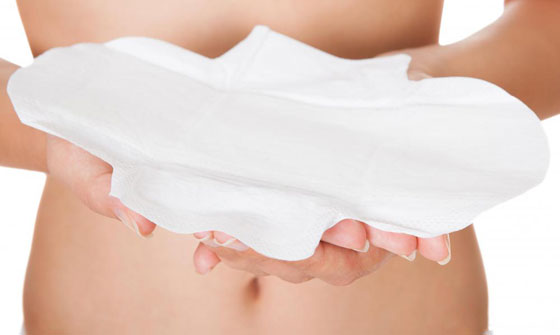
Postpartum hypopituitarism(death of pituitary gland cells). The reason may be:
- severe bleeding after childbirth;
- severe complications during childbirth, such as sepsis or peritonitis associated with bacterial tissue damage;
- complicated toxicosis in the second half of pregnancy (preeclampsia), associated with increased blood pressure, edema, the appearance of protein in the urine.
Treatment is carried out by the method of substitution therapy using drugs containing hormones of the ovaries and other endocrine glands.
Advice: If menstruation does not appear within 2 months after the end of breastfeeding, then you should consult a doctor, as this may be a sign of a new pregnancy. In this case, already during the first menstrual cycle after childbirth, ovulation and fertilization of the egg occur, fixing it on the surface of the uterus. In this case, there is no rejection of the endometrium.
Video: Why it is necessary to protect yourself in the absence of menstruation while breastfeeding
Is it possible to continue breastfeeding during the onset of menstruation
The appearance of menstruation does not affect the taste of milk. Its production may slightly decrease, which is restored after the end of menstruation. The behavior of the child is reflected only in the emotional state of the mother, associated with a change in the hormonal background in her body.

